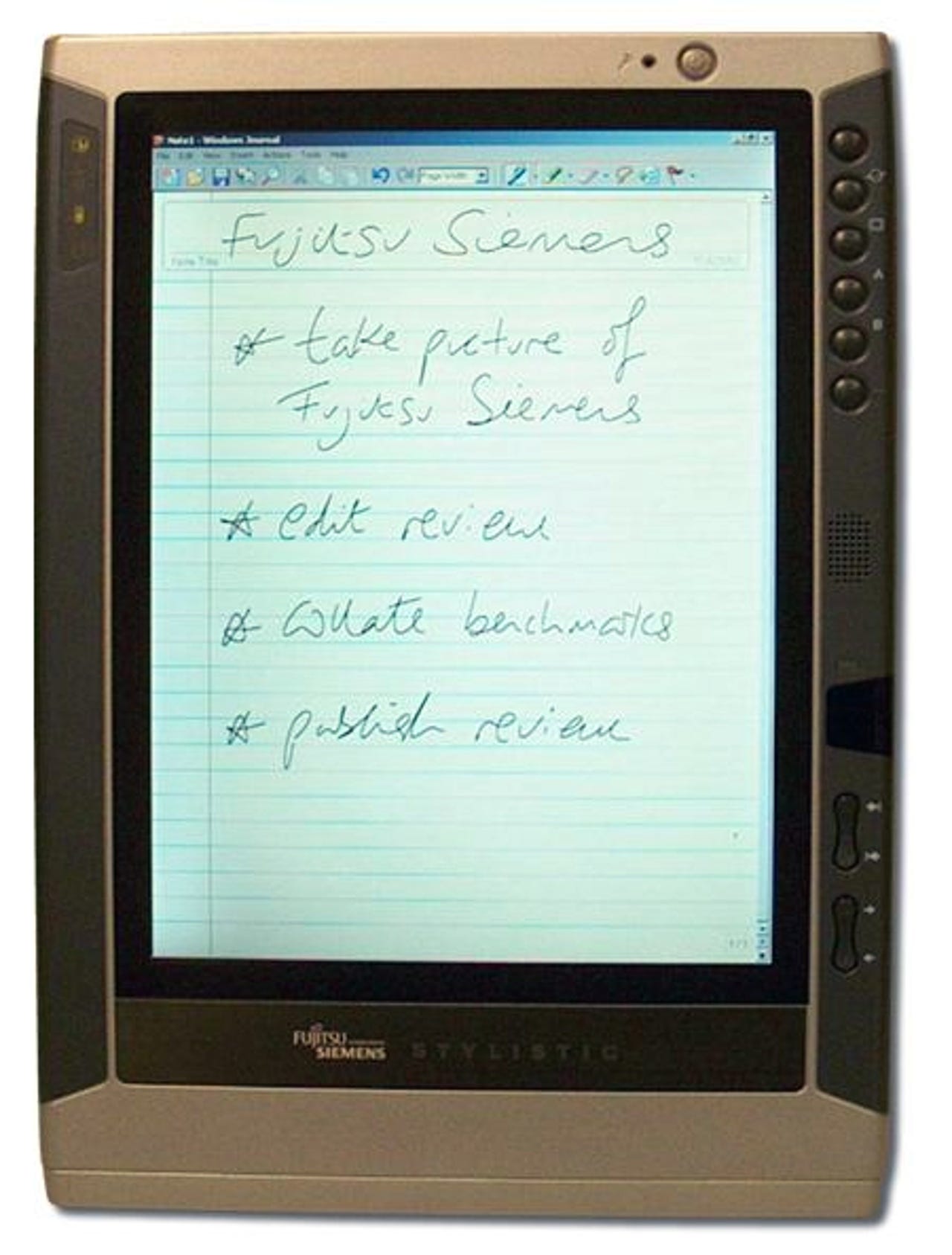Windows tablets through the ages: The good, the bad and the ugly, in pictures

Microsoft has been involved with tablets since the early 90s, which must have made it all the more frustrating to see Apple turn up and grab much of the market with the iPad.
Still, Microsoft has bounced back with its Surface range including the latest to be unveiled: the Surface Neo and Duo, due next year.
Here's a look back at some of Microsoft's earlier efforts in the tablet market over the last decade.
Tablet PC prototype, 2000
Above is a prototype tablet PC showcased by Microsoft at Comdex in 2000. Evidently back in the brighter, more optimistic year 2000, orange and white was a perfectly fine colour scheme for a tablet - if you tried to sell a similarly coloured device now, people would assume it was aimed at the under-tens.
A year later, at Comdex 2001, Bill Gates predicted that the tablet PC would be the biggest-selling type of PC within five years. It would take a little longer than that.
Toshiba Portégé 3500, 2002
Still, fast forward a couple of years and Tablet PC hardware was hitting the market. Here's a convertible Tablet PC from 2002 - the Toshiba Portégé 3500. It ran Microsoft's Windows XP Tablet PC Edition and cost a mere £1,799.

Fujitsu Stylistic ST4110, 2002
Pictured above is a 'slate'-style Tablet PC from 2002, the Stylistic ST4110, made by Fujitsu Siemens with a price tag of just under £2,000. The handwriting of ZDNet reviews editor Charles McLellan hasn't improved much in the intervening years, either.
HP Compaq TC1100, 2003
This HP Compaq device -- the TC1100 -- was seen by many as one of the more successful Tablet PCs.
NEC Versa T400, 2003
Pictured above is the NEC Versa T400 from 2003, hailed as "the thinnest and lightest Tablet PC we've seen so far" by ZDNet, although battery life and performance was a concern.
Tablet PC, 2005
While Microsoft and its hardware partners continued to push Tablet PC hardware (such as in this stunt where cartoonists drew caricatures using the device), they failed to gain much traction beyond particular business niches. I wonder what happened to the reporter being drawn?
Asus R2H ultra mobile PC, 2006
The Ultra Mobile PC (UMPC) was part of Microsoft's attempt to get consumers excited about tablets back in 2006. This Asus R2H ran Windows XP Tablet PC Edition, and had a passive rather than an active touchscreen. UMPCs struggled to find a market -- too expensive for the consumer, they were rapidly overtaken by netbooks (remember them?).
Courier tablet, 2009
Here's one that Microsoft didn't make but probably should have -- the Courier never made it any further than a lavish mock-up, but the unique design had a lot of industry-watchers excited back in 2009. Rumours of its survival bounced around for years, until finally Microsoft announced the Surface Duo and Surface Neo, two devices that echo this look.
Thinkpad X220, 2010
In early 2010 Apple launched its iPad, which rapidly went on to be the tablet market as far as most consumers were concerned. However, Windows tablets such as this Lenovo ThinkPad X220 Tablet continued to fill the gap for enterprise users.
Slate tablet, 2010
Here's one of the devices that Microsoft CEO Steve Ballmer showcased in his CES 2010 keynote, a slate from HP.
Toshiba Encore
Of course Microsoft wasn't the only one making Windows tablets -- here's the 8-inch Toshiba Encore from 2014, which runs Windows 8.1. Dell's Venue Pro 8 is another contender from this period.
Lenovo IdeaPad Yoga 13, 2012
Windows 8 -- with its touch-friendly interface designed with tablets in mind -- was aimed at giving the Windows tablet a boost, and manufacturers tried out new form factors, such as this Lenovo IdeaPad Yoga 13.
Surface RT, 2012
The snappily-titled 'Surface with Windows 8 RT' (mostly known as the Surface RT) was the first device to arrive as part of Microsoft's most recent attempt to build its own tablet hardware. Running the slimmed-down Windows 8 RT operating system, it was aimed at consumers, coming in at the same price as the iPad.
Because it ran on ARM chips, the Windows 8 RT operating system couldn't run normal desktop apps -- only ones downloaded from the Microsoft Store. Windows 8 RT failed to win many fans.
Reviews varied, although it won some admirers. However, Microsoft massively overestimated demand for this model, leading to a $900m write-down to cover the cost of unsold inventory. The RT was later dropped by Microsoft which focused instead on the Surface Pro models.
Surface Pro, 2013
The Surface with Windows 8 Pro was the first business version of Microsoft's tablet. Running the full version of Windows 8, its high spec and higher ultrabook-style price means it is aimed firmly at the enterprise market. Our reviewer liked the build quality and the performance but said it was let down by battery life.
Surface 2
The Surface 2 arrived a year after the first model, and features a dual-position kickstand that angles the display at either 24 degrees or 40 degrees. While our reviewer liked the bump in performance over the Surface RT, the lack of apps remained a sticking point.
Surface Pro 2, 2013
This is the Surface Pro 2 which arrived in October 2013, powered by a fourth generation (Haswell) processor, which delivered improved performance and battery life over the original model. It features a dual-angle kickstand with the aim of making it more comfortable to work or watch video. Our reviewer liked the performance boost but said the unchanged chassis design "feels bulkier and heavier than ever."
Microsoft Surface Pro 3, 2014
The Surface Pro 3 from 2014 is a 12-inch Intel Core i7-based device with a 2,160-by-1,440-pixel screen and an adjustable kickstand. Microsoft promoted this device as "the tablet than can replace your laptop." Our reviewer concluded that: "Hardware niggles and price aside, if you need a Windows 8.1 computer that's flexible enough to be a tablet, a laptop (if you add the optional Type Cover) and even (if you add the optional Docking Station) a desktop PC, then the Surface Pro 3 manages the trade-offs as well as anything on the market."
Toughpad FZ-Y1 Performance, 2016
Panasonic's huge 20-inch Toughpad FZ-Y1 Performance 'business-rugged' Windows tablet was aimed at CAD designers, engineers and architects. At £3,180 it wasn't cheap but what you got was a large-format Windows tablet with a 4K touchscreen, an Intel Core i7 processor and a workstation-class discrete AMD FirePro GPU.
Surface Pro 4, 2015
The Surface Pro 4, released in October 2015, featured a similar design to its predecessor but a slightly larger screen (12.3 inches versus 12 inches for the Surface Pro 3). It also has a front-facing infrared camera that uses the Windows Hello feature to authenticate a user based on facial recognition.
HP Elite X2 1012
HP's 11.6-inch Elite X2 1012 was another two-in-one hybrid, which features a kickstand-based design that is reminiscent of Microsoft's Surface Pro 4.
Surface Book
A 2-in-1 laptop/tablet hybrid with a detachable screen. More expensive models featured an Nvidia GeForce GPU in the base, while the Intel HD Graphics 520 GPU is in the screen section, integrated with the CPU and available for use in tablet mode.
Lenovo Yoga Book
It's not only Microsoft pushing Windows tablet innovation. Here's the Yoga Book. It's a 10.1-inch tablet/laptop hybrid that, instead of a physical keyboard, features what looks like a blank slab that can be used either as touch-based keyboard or for stylus input. Lenovo calls this component the Create Pad.
Microsoft Surface Studio
It's hardly a tablet in that you can't carry around it, but Microsoft's Surface Studio is a big all-in-one desktop that can fold down to enable drawing, typing, drafting, and other tasks, thanks to what Microsoft calls its "zero-gravity hinge."
Surface Go, 2018
This is Microsoft's low-end tablet, the Surface Go. It's aimed at helping the company compete with Apple's cheaper and smaller iPads.
ThinkPad X1 Tablet, 2016
Lenovo's ThinkPad X1 Tablet made its debut in 2016, aiming to compete with the Surface Pro 4 and Apple's 12.9-inch iPad Pro. It has become a staple of the ThinkPad line.
Xidu PhilPad tablet, 2019
Windows 10 tablets now come in many variations - like this low-cost Surface lookalike aimed at consumers...
DT Research DT340T 2019
...and hefty military-grade devices like this, the DT Research DT340T.
Surface Duo, 2020
Somewhere between a tablet and a laptop, this is the Surface Neo, a new device will run Windows 10X, a new version of Windows 10 that is designed for dual-screen and foldable devices. It's due to go on sale in late 2020.
Microsoft Surface Duo, 2020
Another device that defies categorisation. Is it a phone? Is it a tablet? The Surface Duo has two 5.6-inch screens, and like the larger Surface Neo is due in late 2020. But while it's a Microsoft device, unlike the rest of the Surface family it doesn't run a flavour of Windows; it's going to run on Android instead.
The future of tablets?
Wondering what the future of tablets will look like? Check out this gallery: Foldable, swappable, invisible: 12 visions of tomorrow's tablet to see what the devices of the future might look like.